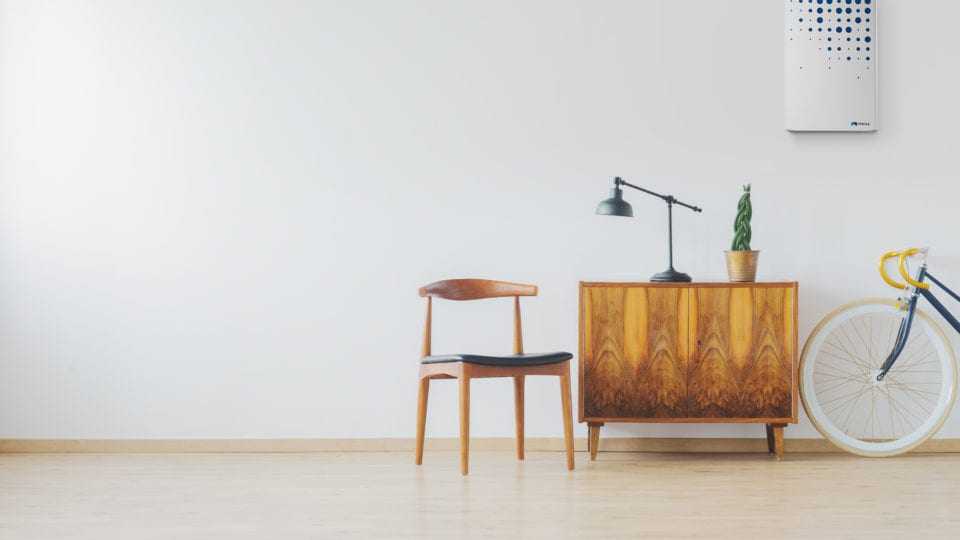Moixa and Energia in bid to build ‘virtual power plant’ in Irish homes
Battery manufacturer Moixa has announced a tie-up with Irish energy supplier Energia to run trials on how integrated smart home batteries, rooftop solar and electric vehicles (EVs) can deliver flexibility to the grid.
22nd October 2019 by Networks

The project partners will use the home storage batteries, solar generation capacity and EV charge points to create a 120 kWh “virtual power” plant.
The aggregated capacity across multiple homes could then support Ireland’s smart energy system, providing frequency-related grid services to Eirgrid, the Irish transmission system operator (TSO).
Energia customers in the demonstration project will receive a 4.8kWh Moixa Smart Battery and a rooftop solar system at a reduced cost, while also being eligible for 50% grant funding from the Sustainable Energy Authority of Ireland.
Once installed, the solar and storage systems could cut Energia customers’ energy bills by up to 50%. Participants will also have the option of installing an EV charge point.
This partnership puts Ireland at the vanguard of the digital energy revolution – delivering a cost-effective, innovative and reliable power system and acting as a blueprint for others across the world
Simon Daniel, chief executive, Moixa
For Moixa, the partnership is part of its international expansion plans in support of grid-edge flexibility. Its Gridshare software currently manages over 9000 home batteries in the UK and Japan, where it works alongside Japanese company Itochu.
The GridShare software embeds machine learning algorithms, which enable connected assets to react to demand or pricing signals, or other constraints.
It can learn energy consumption patterns and developing tailored charging plans for each household and vehicle battery.
The software was fine-tuned in early adopter projects in the UK, including the £10.8 million Smart Energy Islands project on the Isles of Scilly, led by Hitachi.
Simon Daniel, chief executive of Moixa, says: “This partnership puts Ireland at the vanguard of the digital energy revolution – delivering a cost-effective, innovative and reliable power system and acting as a blueprint for others across the world.”
In July, Energia announced a €3 billion investment in Irish renewable infrastructure over the next five years, adding up to 1.5GW of renewable generation to the grid.
This project with Moixa will show how homes can become mini-power stations: generating, storing and supplying electricity, unlocking huge cost and carbon savings for customers and the network alike
Gary Ryan, managing director, Energia Customer Solutions
The project will also support Eirgrid’s DS3 programme, which aims to deliver a secure and sustainable electricity system on the island of Ireland, with 40% of electricity coming from renewable sources by 2020.
Unlocking flexibility at the domestic level could help in reaching this target.
Gary Ryan, managing director, Energia Customer Solutions, said: “At Energia we are proud to be one of the top renewable energy companies in Ireland. We work to not only generate renewable energy but also empower our customers so that they can manage their energy consumption and make positive decisions to maximise the potential of renewables, actively contributing to a low carbon society.
“This project with Moixa will show how homes can become mini-power stations: generating, storing and supplying electricity, unlocking huge cost and carbon savings for customers and the network alike. As an established green energy supplier, Energia is the power behind communities all across Ireland and this agreement with Moixa is another example of how we are further delivering on our commitment to homeowners.”
Moixa has multiple contracts in place with system operators to deliver flexibility using spare capacity from batteries.
Most recently it has been awarded a contract to deliver 50kW of flexibility to UK Power Networks in the Lewes-Newhaven region.
Comments
Login on register to comment
Related content

Power
The future for vegetation management
Why networks should focus on data not trees to overcome the costly challenges involved in vegetation management

Power
An unprecedented opportunity for change
Why short interruptions will matter in RIIO-ED2 and how to address them.

Power
Time for less talk and more action on decarbonisation
Core "oven-ready" solutions to decarbonising heat and transport exist today and should be implemented without delay, says WPD's future power networks expert.
Related supplier content
![‘Learning by doing’ on the road to net zero [test product]](https://networksonline.s3.amazonaws.com/products/images/3.jpg)
People & Skills
‘Learning by doing’ on the road to net zero [test product]
DSO director Andrew Roper discusses 'Learning by doing'

Power
Load patterns and lockdown: how Covid-19 is impacting electricity networks
Insights into dynamics on the low voltage network as the outbreak unfolds

Downloads
Protect electrical equipment from insulation failure
Insulation faults are a major cause leading to the eventual failure of electrical equipment. Partial discharge (PD) is a very reliable indicator of developing insulation faults. Regular PD testing allows users to detect and analyze PD activity